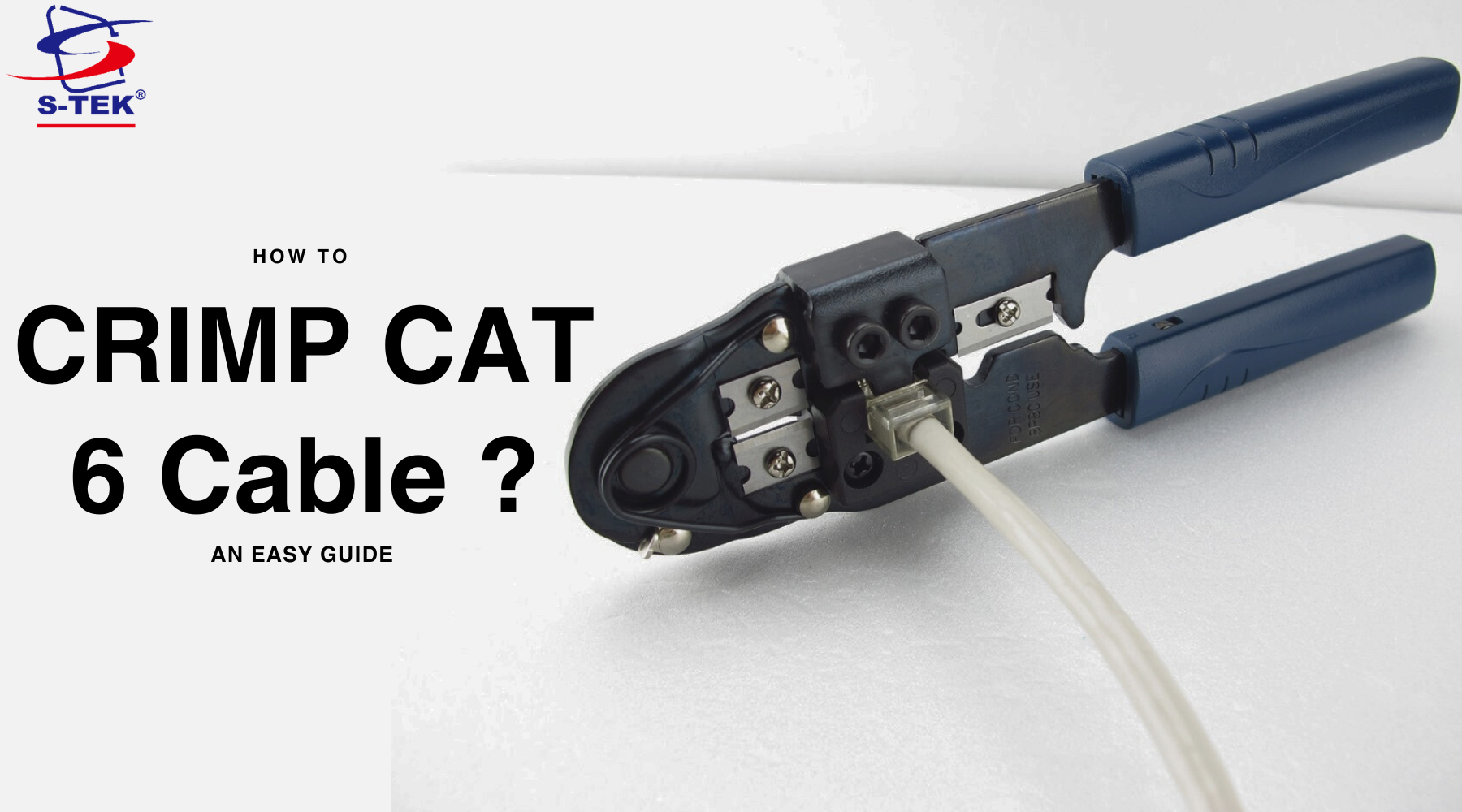
How to Crimp Cat6 Cable? ( An Easy Guide)
We dig into the crucial skill of crimping Cat6 cables in this thorough blog post. Our step-by-step instructions will give you the knowledge and confidence to complete this procedure with ease, whether you're a DIY...
Whether at work or home, it is important for you to ensure that you have managed your ethernet cable in the right way. Especially, when you want to avoid interruption in transmitting data. That is why it is crucial to crimp CAT6 cable. CAT6, also known as Category 6 is a type of ethernet cable that is proven to be helpful for networking and data transmission. However, people often struggle with crimping CAT6 wires, leading them to hiring professional help for the chosen task. But this is where it gets fun. In reality, it isn't difficult at all. For the ease of your mind, we have put together a quick and easy cable installation guide, which will not only make you feel like the man of the house, but also an expert with the process. Without much further ado, lets look over the easy steps to follow.
Crimping Cat6 Wires Like a Professional
Before we get into details and share the much-needed guide, here is what you will need to complete the task:
- Cat6 Ethernet Cable
- RJ- 45 Connectors ( Ideal for CAT6)
- Crimping Tool
- Cable Tester ( Recommended)
Step-to-step Guide To Crimp CAT 6 Cable
Prepare the Cable
Cut the cable according to the required length. Make sure you have enough length to work with. While using a cable stripper strip up to 4 to 5 cm. Once again, ensure that you don’t damage the inner wires.
Sort & Arrange the Wires
You will find four kinds of twisted wires inside the cable. These wires are typically color-coded with blue, orange, green and brown stripes and solid for CAT6. Untangle the wires and arrange according to T558B or t568A which are the wiring standard for Cat6.Whichever standard you choose, make sure it's the same on both ends.
Cut & Straighten the Wires
Cut the wires up to the length of 1-1.5 cm, while using a wire cutter. Be mindful that the wires are flat and straight and there is no crossover between them.
Put Wires into RJ 45 Connector
With your chosen wiring standard, put the wires into the RJ 45 connector, while taking care of the fact that the outer insulation jacket is safe in the connector and wires reach the end safely.
Crimp the Connector
Place the connector in the wires with the crimping tool. Secure the wires in place by squeezing the crimping gadget firmly.
Ensure Your Cable is Functional
After crimping Cat6 wires, use the cable tester, to check if the cable is working and transmitting the data properly.
Key Benefits of Cat6 Cable Crimping
Crimping CAT6 is known to be a popular choice for network installations and data transmissions as it is an easy way to crimp Ethernet cable. Here are some of the reasons why you should plan to crimp CAT6 cable:
Greater Data Transfer speeds: Cat6 cables are manufactured to allow greater data transfer speeds over small distances, which leads up to 10 Gigabits per second (10 Gbps). This makes them an ideal choice for use in applications like streaming, online gaming, and massive file transfers that need quick and dependable data delivery.
Reduced Crosstalk: The successor of CAT5 E has been enhanced with tighter twisted pairs and better insulation. As a result, there are fewer data mistakes and higher overall performance since interference between wires is reduced and signal quality is maintained.
Compatibility:Cat6 Ethernet cables are backwards compatible with Cat5 and Cat5e cables from prior Ethernet generations. Cat6 cables can be utilized in networks with devices that have older Ethernet ports, even though the capabilities of the lowest-rated component may limit the network's performance..
Improved Performance: The best network performance is achieved by carefully crimping Cat6 cables and utilizing premium connectors and terminations. The reduced signal loss and packet resend speeds up and improves the dependability of network connections.
Future-proof: The majority of modern applications can handle Cat6 cabling's data requirements. Your network architecture will be more future-proof and require fewer updates as network speeds rise if you install Cat6 connections.
Support for High-Bandwidth Applications: For data-intensive applications like streaming video, virtual reality, cloud computing, and other high bandwidth workloads, cat6 connections are excellent.
Quality of Service: Data may be reliably and quickly transferred by using Cat6 cables in commercial environments, helping to assure Quality of Service (QoS) for key applications.
Reduced Downtime: Businesses and organizations that depend on reliable network connectivity are less likely to experience network outages and downtime owing to properly crimped Cat6 cables with less interference.
Structured cabling: A structured cabling system, which makes cable management, administration, and maintenance easier, frequently uses Cat6 cabling as a component. As a result, expanding the network and troubleshooting might be made simpler.
Flexibility: Cat6 cables provide scalability for a wide range of applications and network sizes and are utilized in a variety of network configurations, from home networks to data centers.
High-Definition Video and Audio Transmission: Cat6 cabling can transmit high-definition video and audio, making it suitable for use with home theater systems, security cameras, and other multimedia applications.
Professional Installation: Crimping Cat6 cable takes dexterity and the proper methods. These cables can deliver reliable performance when fitted properly.
Longer Cable Lines: Cat6 cables are suitable for longer-distance connections that comply with the standard since they can accommodate Ethernet lines up to 100 meters.
These advantages can be increased by properly crimping Cat6 cables and utilizing high-quality parts, resulting in a stable and effective network infrastructure.
Why Should You Learn to Crimp Cat 6 Cable?
Finally, learning how to crimp Cat6 cables should be a skill for everyone working in networking or information technology. The ability to construct durable and high-performance Ethernet connections is essential in the present digital era. The steps required to go through with Cat6 Cable wiring have been described in this article, from carefully removing the cable's outer insulation to sequencing the wires correctly and inserting them into the RJ45 connection. We have also stressed the importance of testing the cable to ensure that it satisfies Cat6 specifications for signal integrity and bandwidth. With practice and attention to detail, anyone can become an expert at crimping Cat6 wires, aiding in the development of a network architecture that is quicker, more efficient, and reliable. As technology advances, maintaining a solid foundation is crucial.

